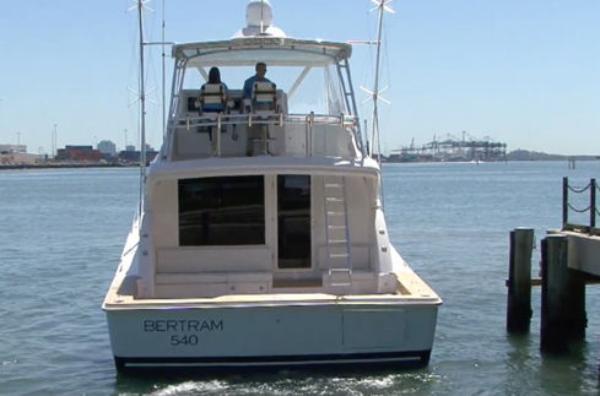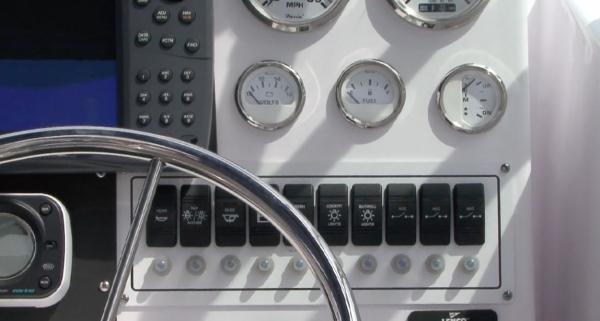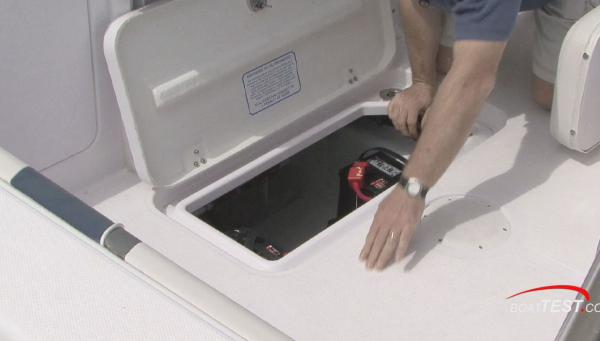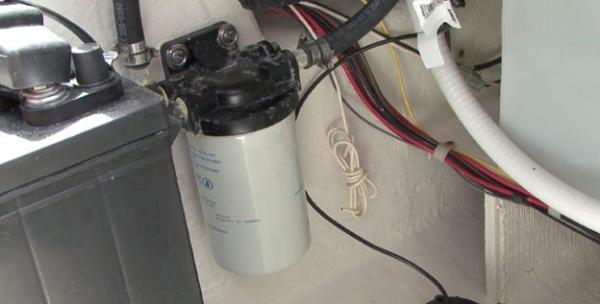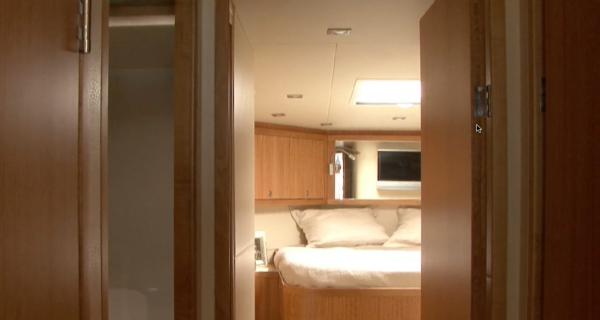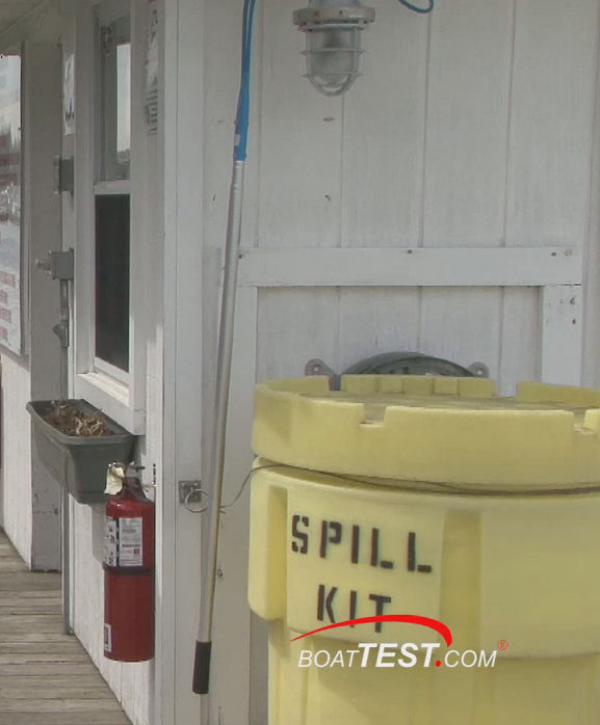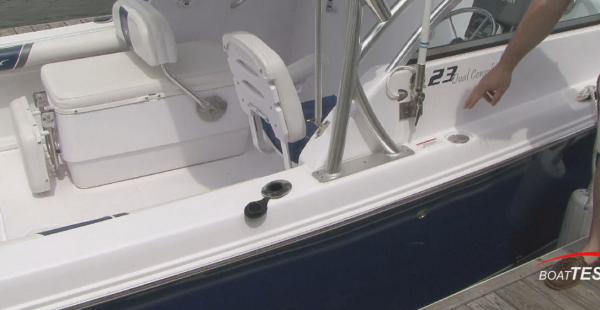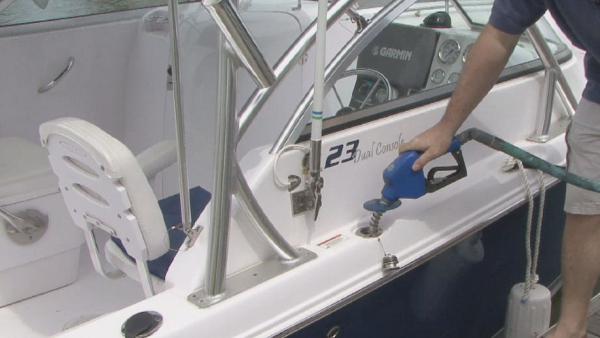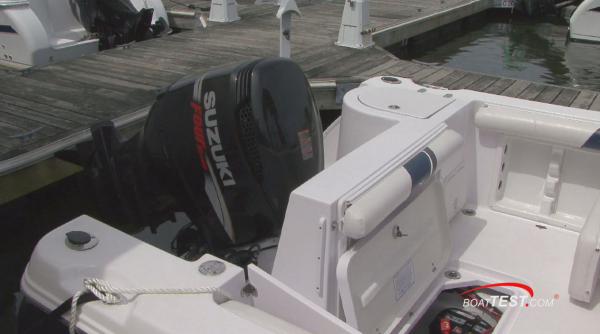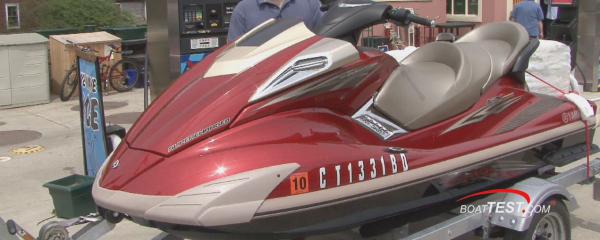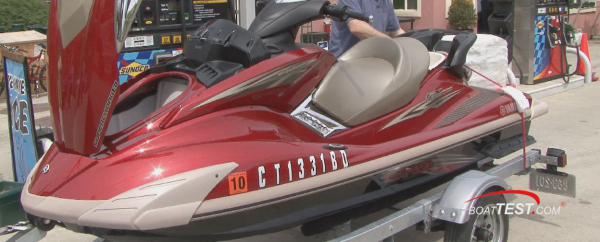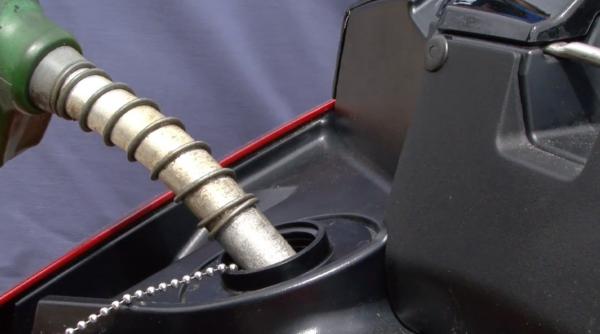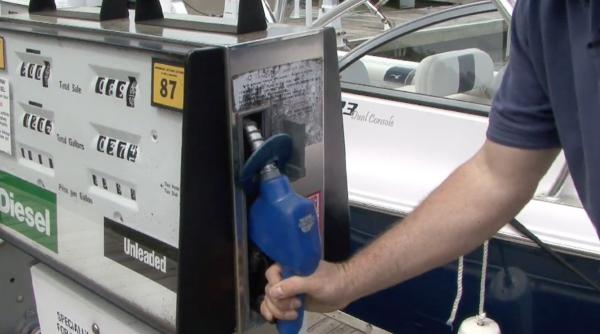First thing, when approaching the fuel dock, you want to make sure you do it in a safe manner, following all approved patterns within your particular marina.
At the Dock. Once you get alongside the dock, secure your boat properly, fore and aft. Then you’re going to ask your passengers to get off while you proceed with your fueling.
Make sure that the boat is powered down.
Be certain all electrical equipment is in the off position.
Before Fueling. We recommend you consult your operator’s manual before you fuel your new boat for the first time. Now there are differences between an outboard and an inboard and stern drives. But for this report start by opening the bilge hatch and inspecting.
Look for any fuel spillage and smell for fumes.
The combined fuel filter and water separator is a good place to start inspecting for fuel leakage.
Look for damaged lines, again, smell for fuel leaks, and generally make sure that everything is connected properly.
Now if your particular boat has a cabin, make sure you close the hatch, so the fuel vapors won’t get inside.
Also, remind everyone around, no smoking during the fueling. Next on our checklist is fire safety.
Locate and find out where the nearest fire extinguisher is other than the one on your boat.
In addition, find out where the spill kit is, just in case it is needed.
This may seem obvious, but make sure you know where your actually filling ports are. Do not mistake a rod holder (shown above) for the fuel port. Your filling port will be marked clearly, gas.
When you do begin your filling process, go ahead and open up the fill port first. This way you are not holding on to the gas hose fumbling around.
As you begin your filling, make sure you keep the nozzle in contact with your fill port at all times.
Fuel Spillage. Be aware of any spillage that might happen and have an absorbent rag on hand to clean that up. When the fueling is complete, again, make sure there is no spillage.
When the filling is complete, be careful removing the fuel nozzle to avoid spills.
Carefully secure the fuel nozzle back on the pump.
Be certain to securely close the fueling port.
After the fueling is complete, go back in again, open up your engine hatches and check your lines, and double check again for leaks now that the boat is full.
Inboard and Sterndrive Boats. For those of you with inboard engines. Make sure that you have your blowers on before you start up, and check for the recommended timings.
When not fueling up at the fuel dock or on a trailer, we recommend that you follow exactly the same safety steps.
In this case we are using a Personal Water Craft (PWC) as an example. We want to make sure that we open up our hatches, do our inspections, look and smell for leaks.
Most importantly, open up the hatch to the engine compartment, that way we can ventilate any gas fumes.
As with filling up dockside, when on a trailer make sure you keep the nozzle in contact with your fill port at all times.
Carefully secure the fuel nozzle back on the pump. Be certain to securely close the fueling port. After the fueling is complete, go back in again, check your lines and double check again for leaks now that the boat is full.
